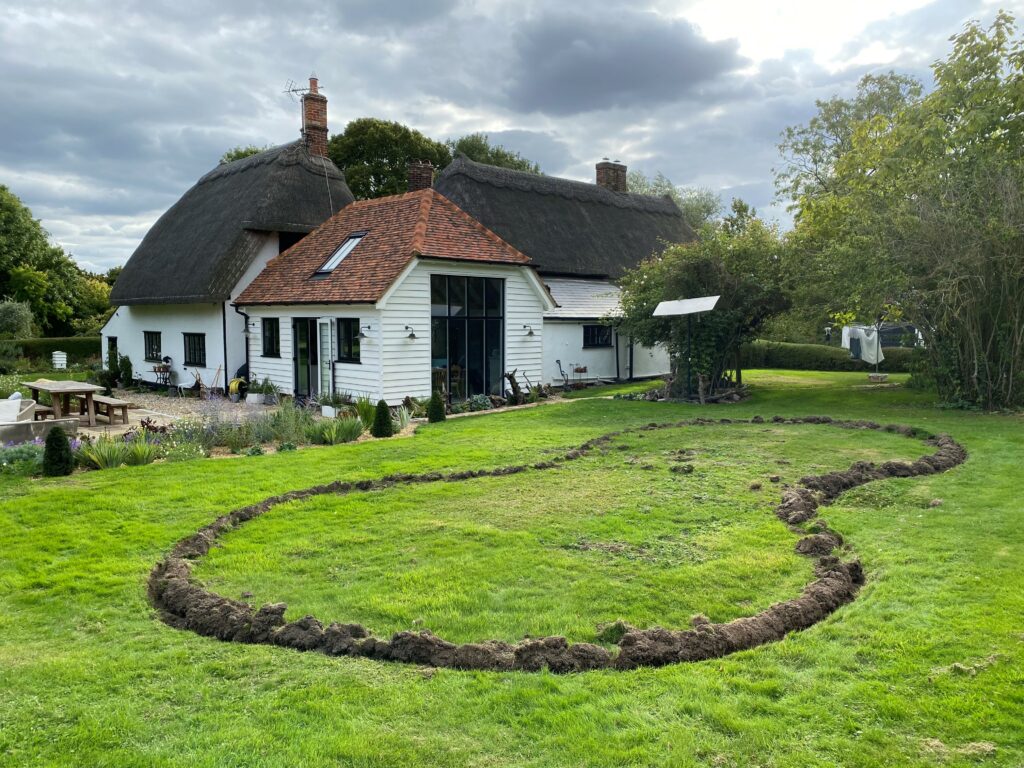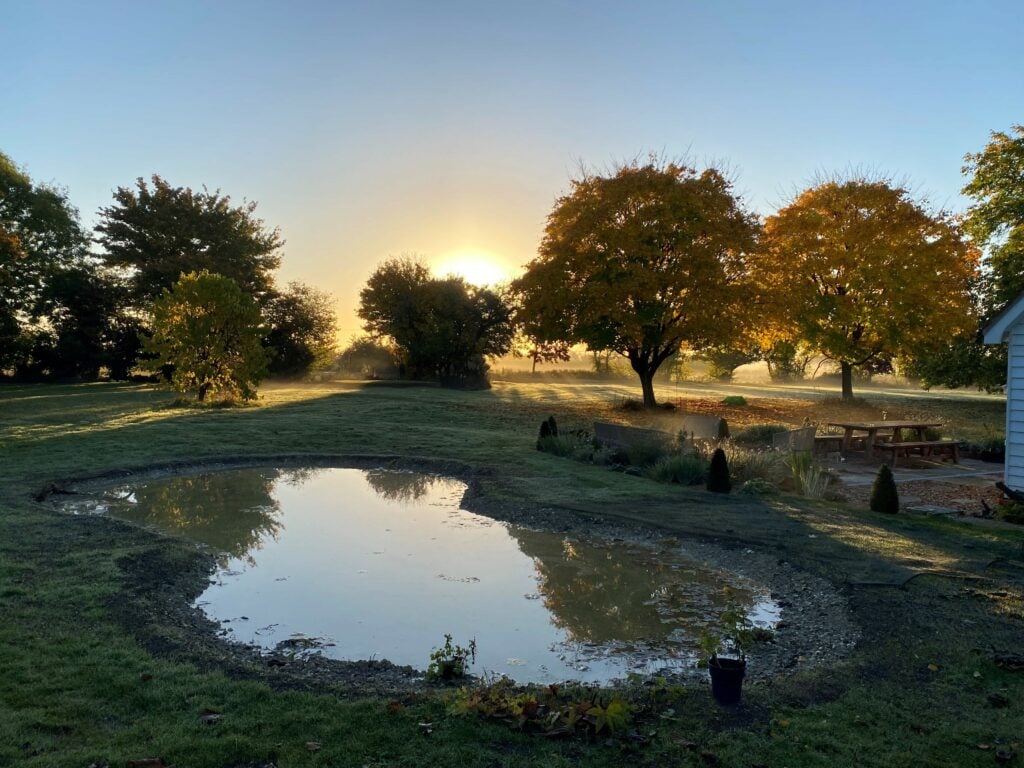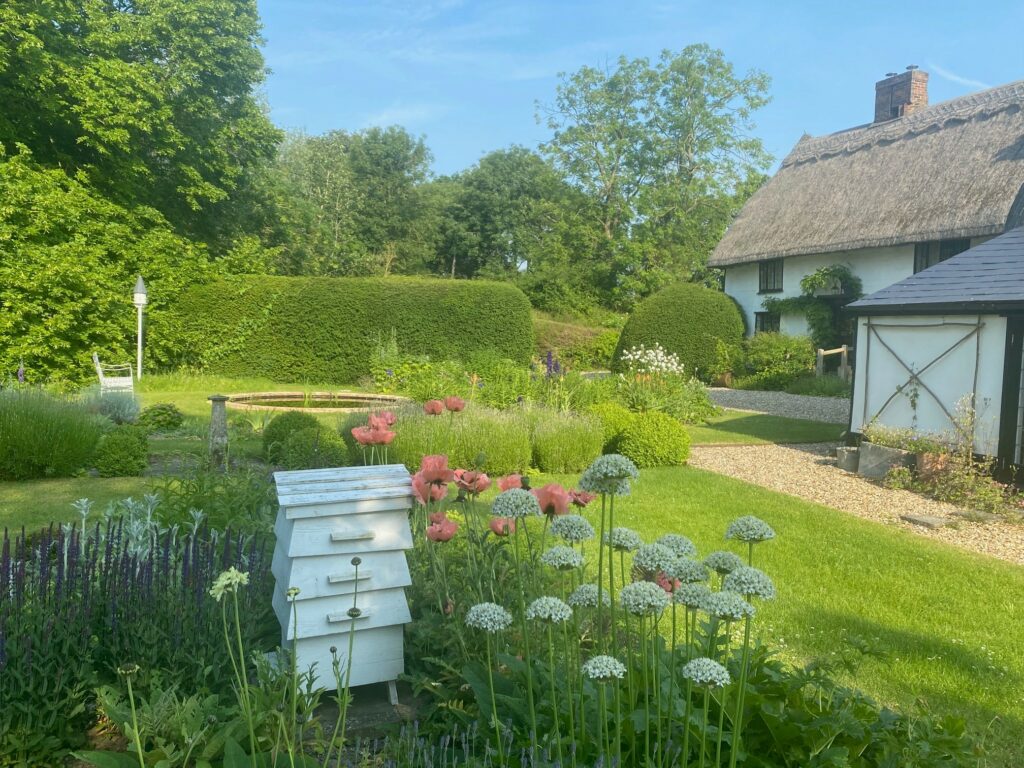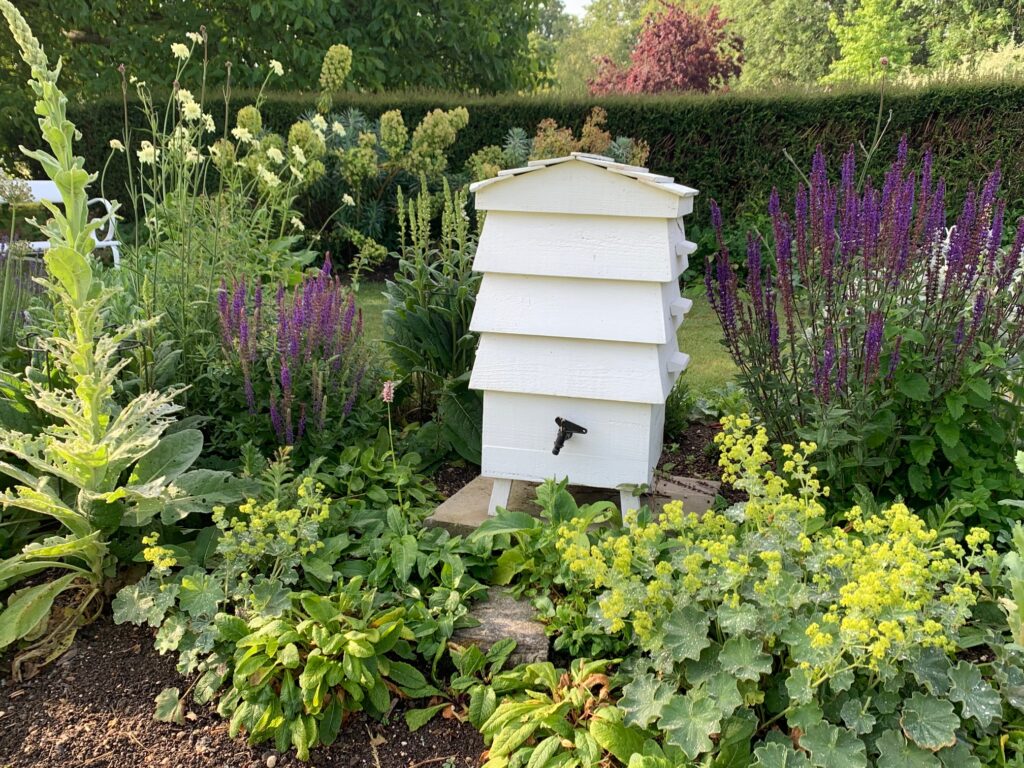A passion for ponds…
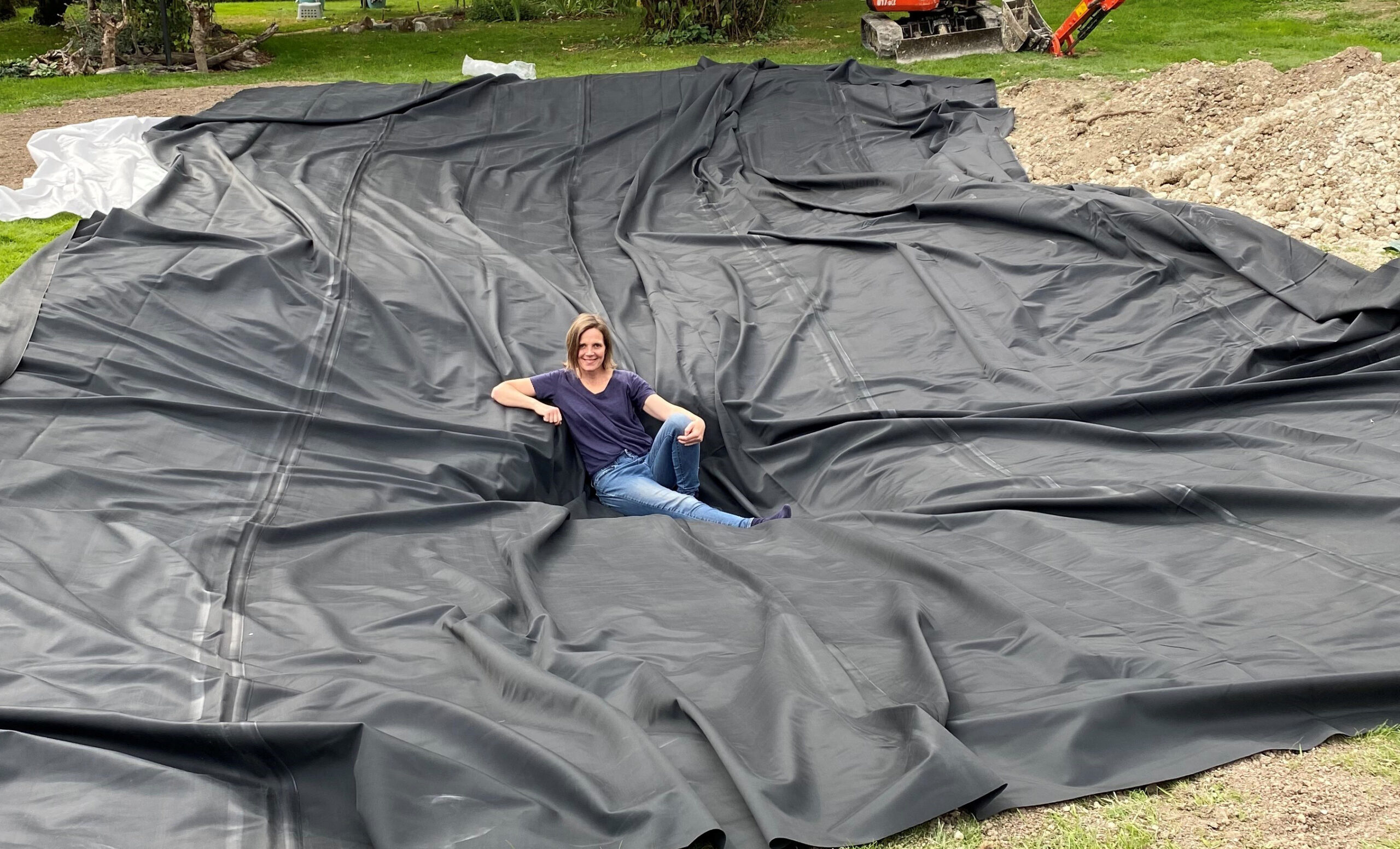
Jilly McNaughton opens her garden in Essex for the National Garden Scheme in June. But, as Assistant Farm Environment Adviser at FWAG East (Farming & Wildlife Advisory Group for Cambs, Herts, Essex, Beds & Northants) she works mainly on farmland pond creation and restoration for great crested newts. We caught up with her for some expert advice.
I am lucky to have a three acre garden in a hamlet in North-West Essex, an ancient landscape of ‘ends’ and ‘greens’, dotted with green lanes, farmsteads and farmland ponds. The latter were dug into the chalky boulder clay in times past to water livestock or supply ‘daub’ for building the barns and cottages hereabouts.
There are the remnants of several such ponds in my hamlet and like many farmland ponds today they have been left high and (literally) dry as farming practices moved on, the livestock left East Anglia, and chemical agriculture, trees and leaves encroached.
This has left us with more dark, shady, dry and polluted ponds than open, light, clean-water pond habitats, so my first priority was to create such a pond to replace what had been lost here. I actually created two new ponds in 2023; a 60m2 ‘nature’ pond in the back garden and a more formal round pond at the front of the house.
- Marking out the wildlife pond
I had heard that, in spite of the lack of suitable breeding habitat offered by the local degraded farmland ponds, protected great crested newts were still clinging on to existence in our hamlet – thanks to two gardening neighbours who had small (but cherished) garden ponds where they had seen them. Their ponds may have been small, but they offered something crucial for breeding amphibians – pollutant-free water that lasted throughout the summer months. The gardens also offered excellent terrestrial habitat (newts spend most of the year on land) including compost heaps, ample vegetation, hedgerows and log piles.
To my delight it was only a matter of months before smooth newts moved into both my new ponds, the frilly-tailed males performing their delightful waggle dances (newt mating is a civilised, consensual process compared with other amphibians!) and shimmying effusively up to the surface for the odd gulp of air. At times there are so many they appear to swim in shoals. It took just over a year before I saw my first great crested newt in spring this year, altogether more elusive, darker and noticeably larger.
The ponds are hives of activity, something always catches the eye – a great diving beetle surfacing like a loggerhead turtle in miniature, strings of freshly laid toad spawn with jet black larval beads, or an interesting new algae to admire (my pond has stonewort – a complex alga and early coloniser of new pond habitats which thrives in clean water).
I’ve seen a grey wagtail and a little egret visit the ponds, a sparrow hawk washing in one, and there are scores of brightly coloured damsel and dragon flies dancing over the water from April to October. There are whirligig beetles, backswimmers, pond skaters and water boatmen; old friends, familiar from a well-spent childhood.
Water gardening offers the opportunity to grow a whole new host of plants too. Because I work in farmland pond conservation for my day job, my pond has become my classroom – I use it to train my eye to recognise water crowfoot, water plantain, flowering rush, water mint, milfoil, brooklime, hornwort, water starwort, frog bit, marsh marigold and the like.
Garden ponds are important – although they may be transient habitats (so many people move in to a new home and promptly fill them in!) Ponds in the countryside can be transitory in nature too and many pond-associated species have evolved to be highly mobile to cope with this. They offer clean water refuges – stepping stones across our landscape from which biodiversity can disperse and find other ponds in the wider countryside.
We should not underestimate the importance of garden ponds for the multitude of species they support – think of the emergent insects picked off by foraging bats on the wing, the amphibians, the mammals, the birds, the list goes on. But just as importantly, as we gaze into their glassy depths, they serve as a window. Through it, we glimpse another world with all the fascination and beauty of nature writ large, allowing us to step outside of ourselves for a moment and reconnect with the wild in our own back yards.
This autumn I plan to tackle the restoration of one of the overgrown farmland ponds in our hamlet. It will require my chainsaw and the hire of a 6 tonne digger but, once complete, it should help the pond hold water into the summer months, offering further habitat to the numerous species here. It will be interesting to see what plants germinate from the seed-bank of the old pond too. I hope the newts will approve!
- Wildlife pond, first autumn
Jilly’s Top Ten Tips for Garden Pond Creation
1. Ideally choose a site with a little sun and a little shade, away from tall trees to avoid leaf litter if possible.
2. Try to achieve shallow sloping sides tapering gently to a central depth of at least 60cm (some amphibians over-winter in the bottom of ponds and greater depth will also help the pond stay cool in summer).
3. Always use a pond fleece underlay and pond liner, unless you are on good clay soil and prepared to dig a deeper pond.
4. Use a pond fleece overlay and then back-fill the pond with a layer of subsoil – this will protect the liner from sunlight and provide a natural substrate for plants to root into and amphibians and invertebrates to hide in.
5. Allow the pond to fill with rainwater which is lower in nutrients and chemicals than tap water.
6. Set up a gutter diversion from a nearby roof via a water butt to keep the pond topped-up in summer.
7. Plant only native, local pond plants to avoid the likelihood of non-native invasive species arriving. Or just see what plants nature brings you! For a list of native plants suggested by WWT click here
8. Place a pile of logs beside the pond for overwintering amphibians.
9. Allow an area of grass or other vegetation to grow longer up to the ponds edge, ideally connecting to other areas of the garden, to offer humid shelter at ground-level to species emerging from the pond.
10. It’s a personal choice, but for maximum wildlife value avoid adding fish which predate amphibian and invertebrate larvae and can stir up silt in the pond, making it difficult to observe other species in the pond.
Jilly opens her garden at Sheepcote Green House in Saffron Walden
By Arrangement – for more details click here
This story originally appeared in the 2024 Little Yellow Book of Gardens and Health, marking Gardens & Health Week, which you can view here





